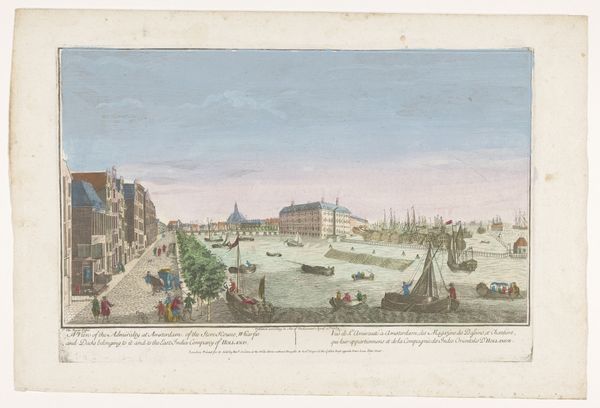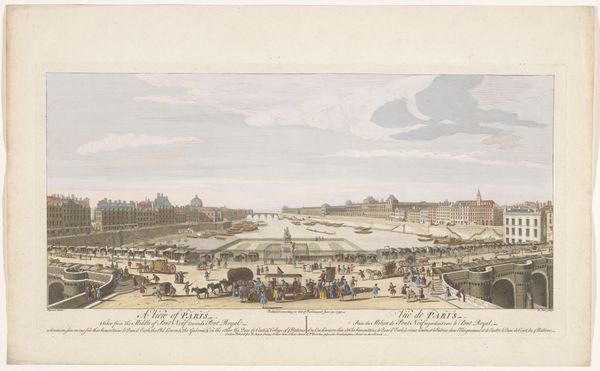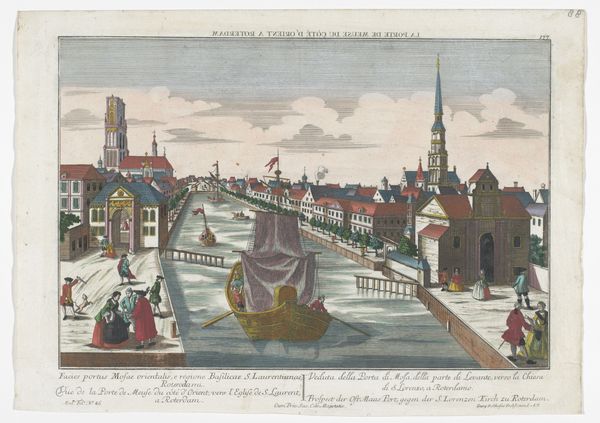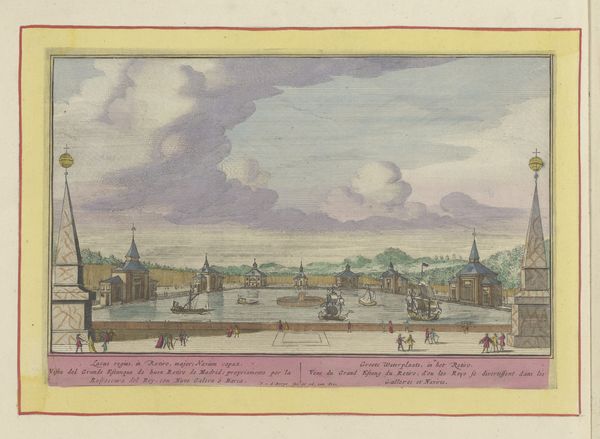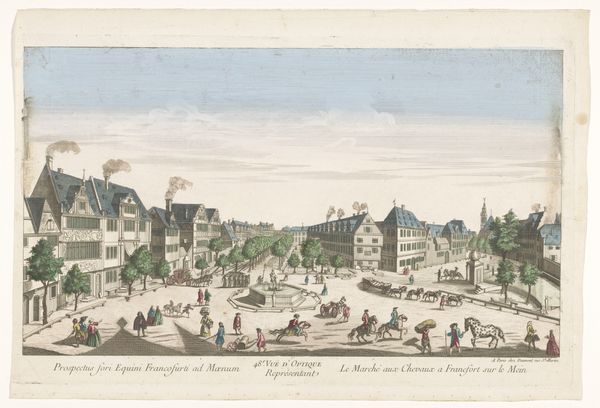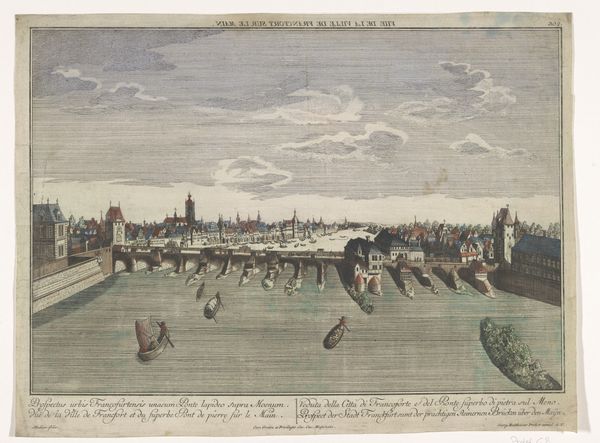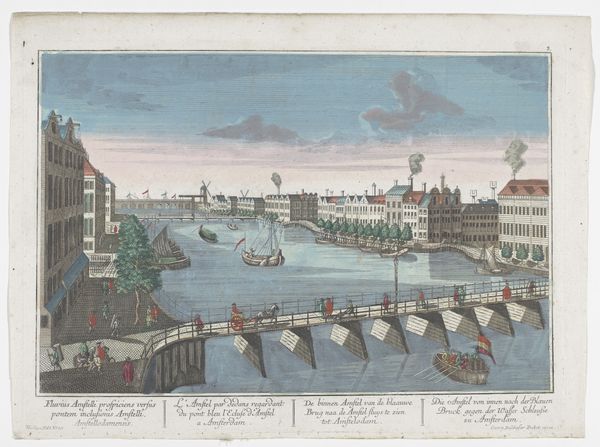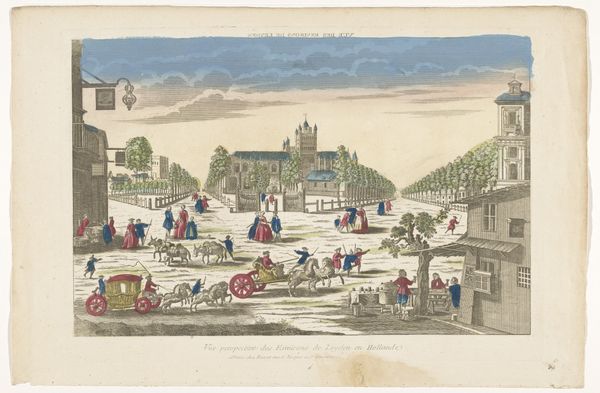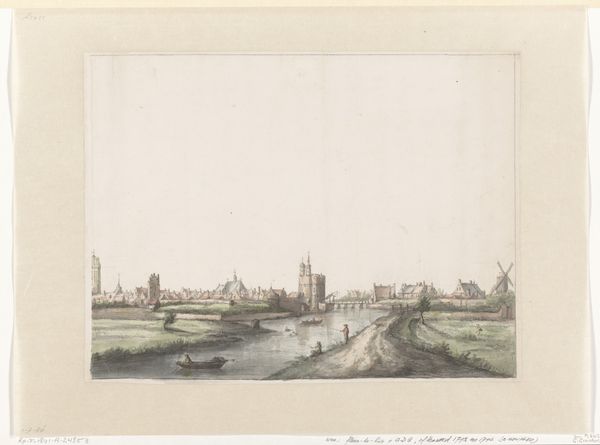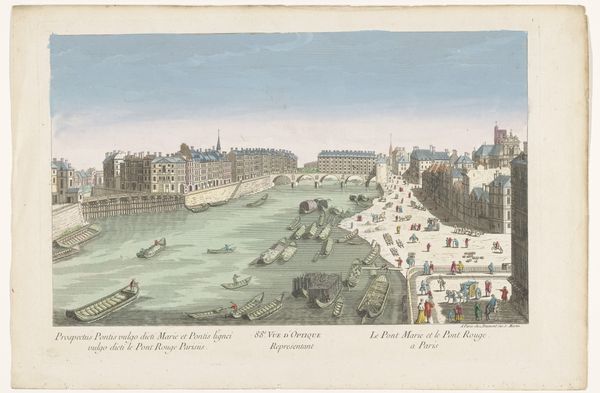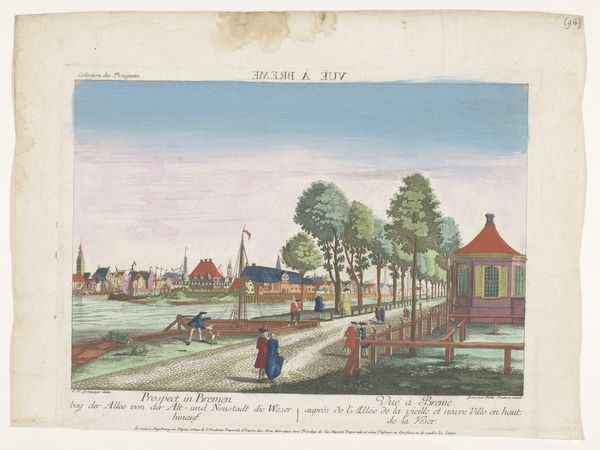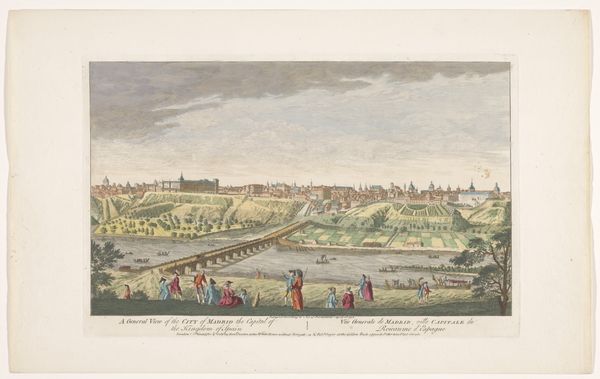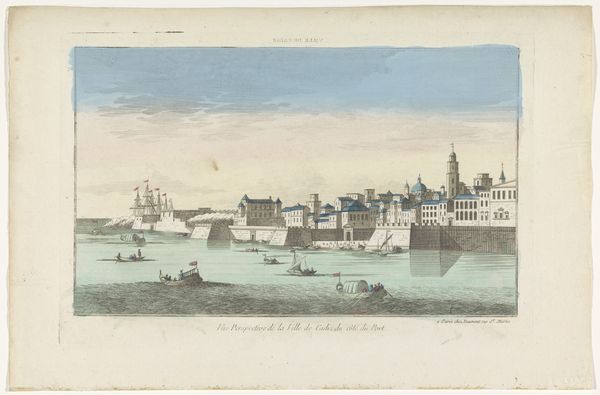
Gezicht op de Amstelsluis en het Diaconieweeshuis te Amsterdam 1745 - 1775
0:00
0:00
jeanfrancoisdaumont
Rijksmuseum
painting, watercolor
#
painting
#
landscape
#
watercolor
#
cityscape
#
watercolour illustration
#
rococo
Dimensions: height 281 mm, width 388 mm
Copyright: Rijks Museum: Open Domain
Curator: This is Jean-François Daumont’s "View of the Amstel Lock and the Diaconieweeshuis in Amsterdam," made sometime between 1745 and 1775 using watercolor. The first thing I notice is its tranquility, despite being a cityscape. The scene almost feels like a stage set. What captures your attention? Editor: It’s the sheer volume of boats on the water that strikes me. They seem almost crammed into the Amstel. How does the artist's choice of materials affect the viewer’s understanding of Amsterdam's waterways at that time? Curator: Good question. Watercolor, unlike oil, lends itself to quick, on-site documentation. This work suggests a booming commerce directly visible within the cityscape itself. What social structures enabled the building of the locks and orphanage, both essential components displayed in this print? And who would have commissioned such a work? Editor: I'm curious about how this cityscape presents a specific point of view related to the waterways, bridges, or locks. Is the artist merely showing it or also promoting Amsterdam as an important global trading hub? Curator: Precisely. Think about the process of making prints like these. How would an artist's workshop operate? Who were the engravers, the paper suppliers, the colorists? Each part shows the economic networks at play. What does this image suggest about labor at the time? Editor: So, you are highlighting how the material production mirrors the broader economic system operating in Amsterdam at the time, and it suggests a more labor-intensive approach to production and distribution? Curator: Exactly. It really asks us to think about what the artwork itself represents but also how the very existence of the print shows particular manufacturing techniques and capitalist culture in 18th-century Amsterdam. Editor: Thank you, seeing the artwork through a material lens gives such an insightful context.
Comments
No comments
Be the first to comment and join the conversation on the ultimate creative platform.
